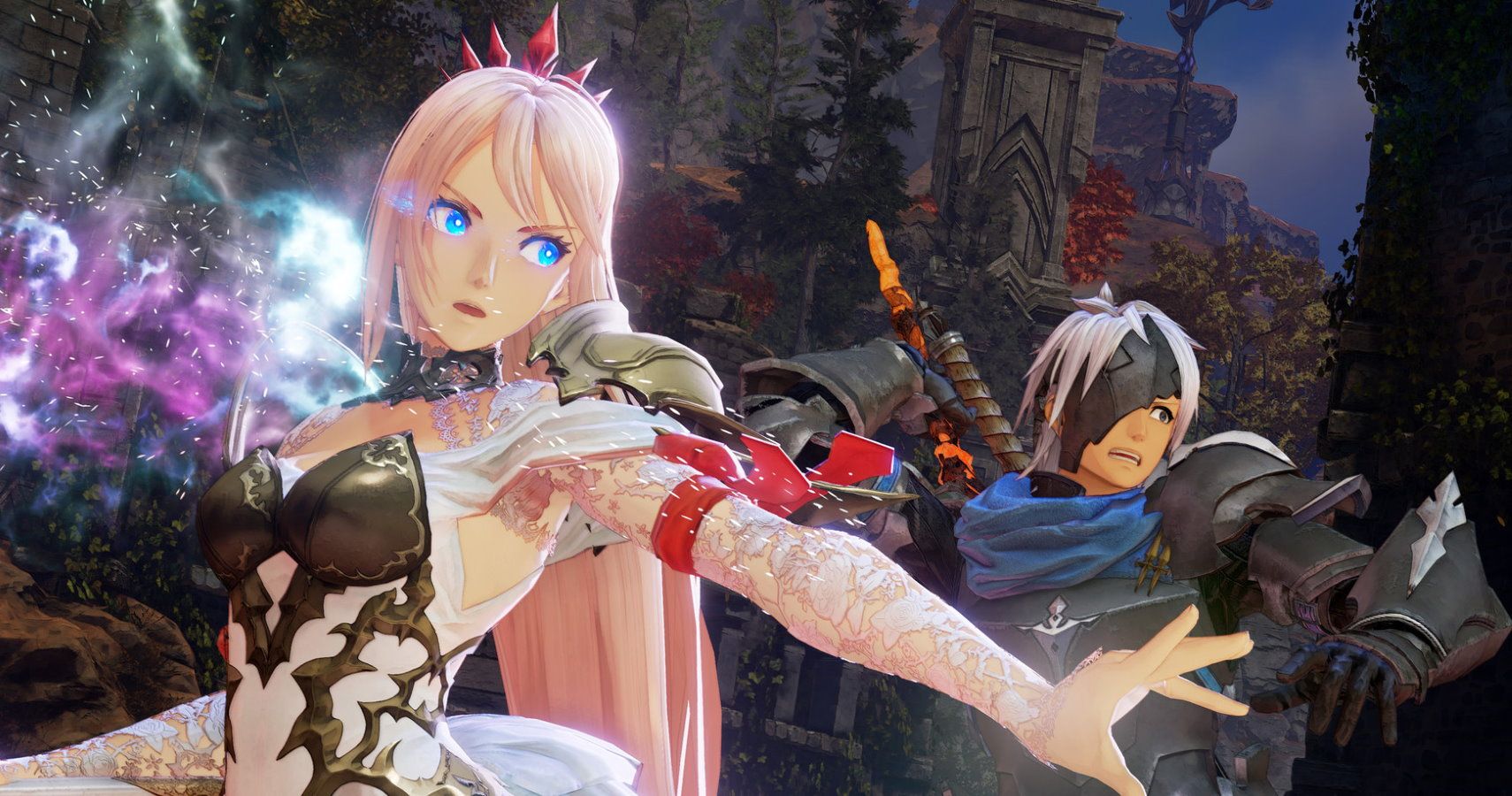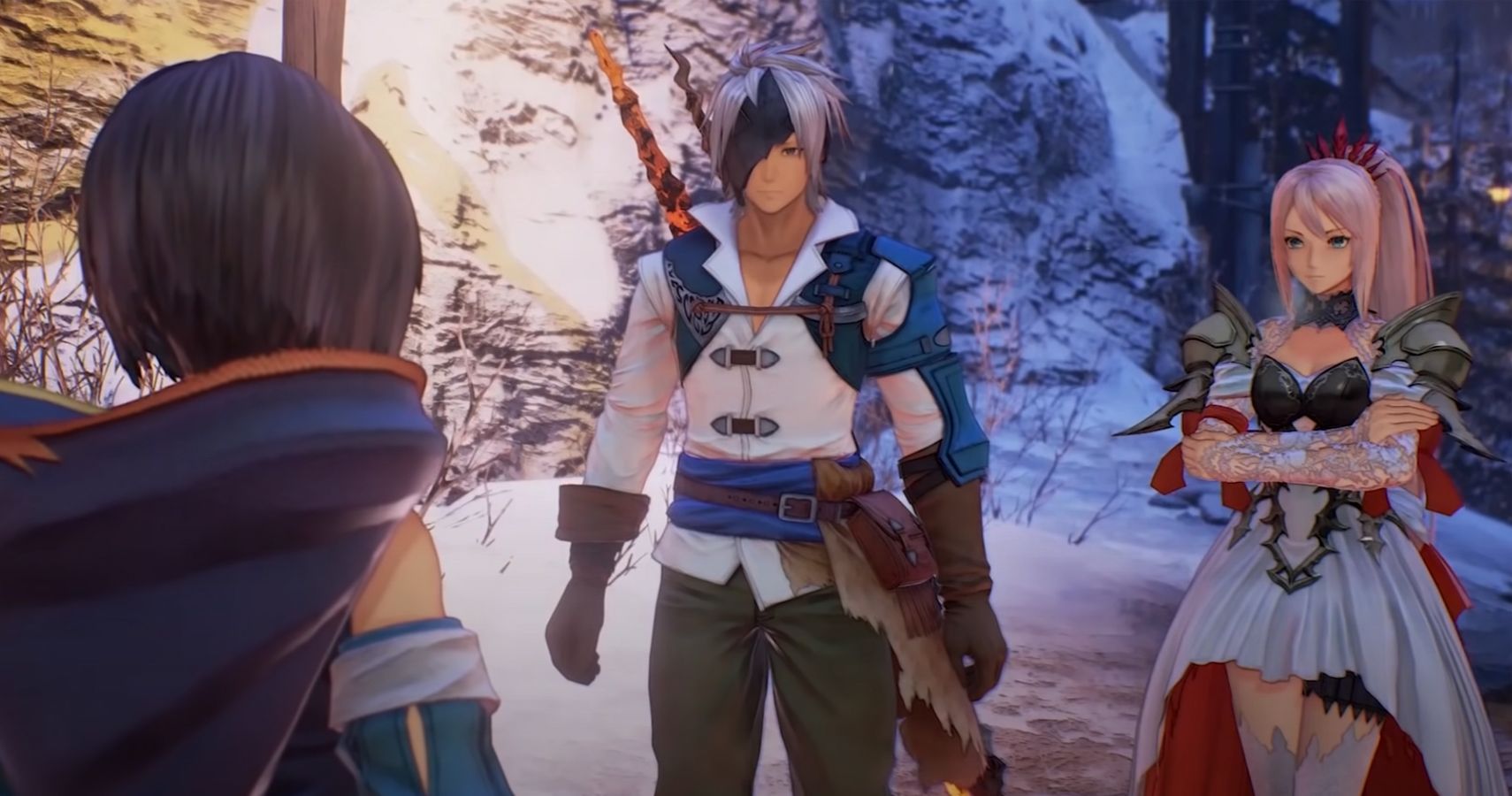Combat is what holds a Tales game together. The stories in this JRPG series are often generic, telling tales (sorry) about a world mirroring our own just beyond a metaphysical veil that separates us, or childhood friends struggling to connect throughout their adult years. Anime melodrama aside, combat has always been the series’ saving grace. So it's no surprise that the time I spent with Tales of Arise as part of a recent preview seemed built specifically to give me just enough time to appreciate the combat, and little else.
Still, that's exactly the introduction I needed. Regardless of everything else, the combat is what will keep me engaged throughout a 40+ hour storyline, and I'm pleasantly surprised with the complete revelation that is combat in Tales of Arise. The system has been entirely freed up - forget about the fixed 2D fighting planes of past titles, the new arena allows you to free run in any direction at all times, and instead of standing and blocking, you can now dodge and counter foes, more like in a traditional action game. The Tales team has finally buckled down and ironed out the kinks of their previous systems, and it's excellent thus far.
Your basic attack button is now R1 - a bit of an odd choice, but it's becoming more and more common with intense action titles, thanks to the influence of the FromSoftware game I shall not name for fear of turning into a living cliche. You have a dodge, and three separate buttons dedicated to different Artes, special attacks that you can unleash to do huge amounts of damage, but by using shortcuts, you can access these special moves more freely without ever having to bring up a menu or pause the action.
As is tradition, you have a party consisting of four members, but you can also bring extra party members into the battle with a new assist system - all characters have a powerful assist ability that can keep combos going, and these recharge fairly quickly, often allowing you to use an ability from each character twice in a standard-length fight. Once a meter fills, these become much more powerful attacks, a bit closer to the Burst Artes from past games. You can also break an opponent, allowing you to execute a team attack with a chosen party member, again, unleashing a powerful move. The enemies I fought in this limited demo were fairly tough with a lot of health, meaning I had plenty of time to use the full variety of attacks in every fight. Even though it sounds like you might be overpowered with this vast array of abilities, the enemies are tough enough to justify the extra brute force.
Combat is just one part of the overall package, of course. While I didn't get to see too much of the new cast interacting with one another, it's already clear that it will be a key part of the game, and the new large-scale open-world areas even have camps, similar to Final Fantasy 15, where you can sit down with a party member and cook a meal, complete with endearing character interactions.
Unfortunately, those new open areas still feel a bit dated. For one, this is not a true open world - these are large "chambers" with select entrances and exits, leading to new chambers or towns. But maybe I’m being too cynical - these might functionally just be large rooms to trek across, but aesthetically Tales of Arise is the best looking game in the series. It will be divisive, but backgrounds slowly fade out and blur, evoking a painterly aesthetic like that of Zelda: Skyward Sword. The edges of cliffs and trees have a thin outline making them stand out on the horizon, and as you approach, details slowly fade back into view in a way that feels natural, and less like there's a fixed point where features pop into view.
However, your time in these areas will essentially boil down to picking up collectible items from shiny patches, and fighting enemies. This is how all of the environments in the series have worked since Tales of Xillia on the PS3, and while running around a new area, grabbing items, and filling up your library of collectibles can feel satisfying at first, it gets old quickly. It won't be long until you inevitably start purposely avoiding enemies and items so you can make a beeline to the next story checkpoint after your second or third time in the same area.
Those criticisms aside, there's a lot to be optimistic about with Tales of Arise. The graphics are distinct and unlike those of any other Tales game, and while the world feels a bit generic in this early section, the combat is absolutely going to keep me engaged as I figure out the intricacies and combo potential of each party member. This will undoubtedly be a great RPG for the combat alone, but the world and story is what will decide whether or not this will become a classic.



